Nigel S., Chambers S., Johnson R. Operations Management
Подождите немного. Документ загружается.

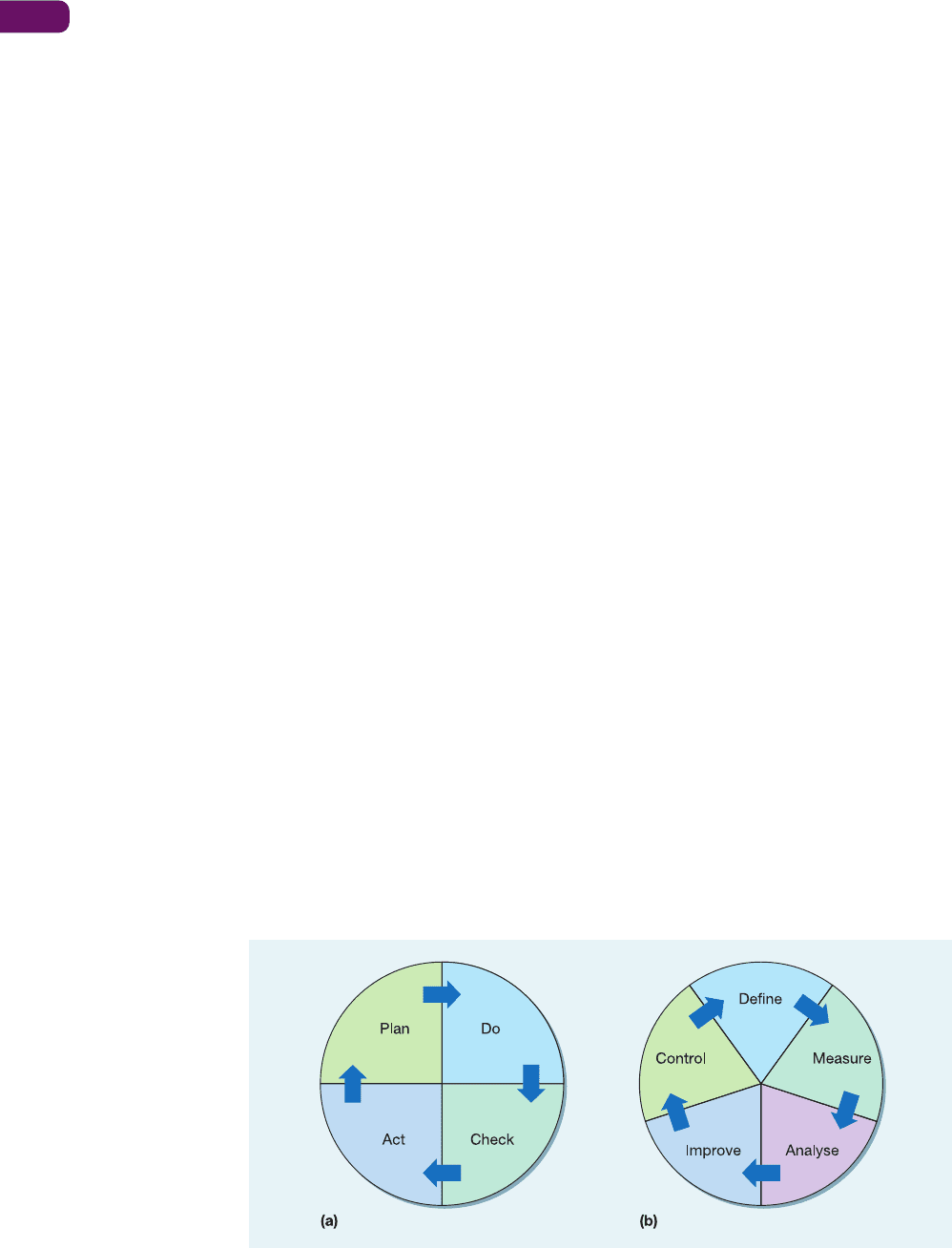
Continuous improvement
Continuous improvement, as the name implies, adopts an approach to improving perform-
ance which assumes many small incremental improvement steps. For example, modifying
the way a product is fixed to a machine to reduce changeover time, simplifying the question
sequence when taking a hotel reservation, and rescheduling the assignment completion
dates on a university course so as to smooth the students’ workload are all examples of
incremental improvements. While there is no guarantee that such small steps towards better
performance will be followed by other steps, the whole philosophy of continuous improve-
ment attempts to ensure that they will be. Continuous improvement is not concerned with
promoting small improvements per se. It does see small improvements, however, as having
one significant advantage over large ones – they can be followed relatively painlessly by other
small improvements (see Fig. 18.2(b)). Continuous improvement is also known as kaizen.
Kaizen is a Japanese word, the definition of which is given by Masaaki Imai
3
(who has been
one of the main proponents of continuous improvement) as follows. ‘Kaizen means improve-
ment. Moreover, it means improvement in personal life, home life, social life and work life. When
applied to the workplace, kaizen means continuing improvement involving everyone – managers
and workers alike.’
In continuous improvement it is not the rate of improvement which is important; it is the
momentum of improvement. It does not matter if successive improvements are small; what
does matter is that every month (or week, or quarter, or whatever period is appropriate)
some kind of improvement has actually taken place.
Improvement cycles
An important element within some improvement approaches is the use of a literally never-
ending process of repeatedly questioning and re-questioning the detailed working of a
process or activity. This repeated and cyclical questioning is usually summarized by the idea
of the improvement cycle, of which there are many, but two are widely used models – the
PDCA cycle (sometimes called the Deming cycle, named after the famous quality ‘guru’,
W.E. Deming) and the DMAIC (pronounced de-make) cycle, made popular by the Six Sigma
approach (see later). The PDCA cycle model is shown in Figure 18.3(a). It starts with the P
(for plan) stage, which involves an examination of the current method or the problem area
being studied. This involves collecting and analysing data so as to formulate a plan of action
which is intended to improve performance. Once a plan for improvement has been agreed,
the next step is the D (for do) stage. This is the implementation stage during which the plan is
tried out in the operation. This stage may itself involve a mini-PDCA cycle as the problems of
implementation are resolved. Next comes the C (for check) stage where the new implemented
Part Four Improvement
544
Continuous improvement
Kaizen
Improvement cycle
PDCA cycle
Figure 18.3 (a) The plan–do–check–act, or Deming improvement cycle, and (b) the
define–measure–analyse–improve–control, or DMAIC Six Sigma improvement cycle
M18_SLAC0460_06_SE_C18.QXD 10/20/09 15:22 Page 544

solution is evaluated to see whether it has resulted in the expected performance improvement.
Finally, at least for this cycle, comes the A (for act) stage. During this stage the change is con-
solidated or standardized if it has been successful. Alternatively, if the change has not been
successful, the lessons learned from the ‘trial’ are formalized before the cycle starts again.
The DMAIC cycle is in some ways more intuitively obvious than the PDCA cycle inso-
much as it follows a more ‘experimental’ approach. The DMAIC cycle starts with defining
the problem or problems, partly to understand the scope of what needs to be done and partly
to define exactly the requirements of the process improvement. Often at this stage a formal
goal or target for the improvement is set. After definition comes the measurement stage. This
stage involves validating the problem to make sure that it really is a problem worth solving,
using data to refine the problem and measuring exactly what is happening. Once these
measurements have been established, they can be analysed. The analysis stage is sometimes
seen as an opportunity to develop hypotheses as to what the root causes of the problem
really are. Such hypotheses are validated (or not) by the analysis and the main root causes
of the problem identified. Once the causes of the problem are identified, work can begin on
improving the process. Ideas are developed to remove the root causes of problems, solutions
are tested and those solutions that seem to work are implemented and formalized and results
measured. The improved process needs then to be continually monitored and controlled
to check that the improved level of performance is sustaining. After this point the cycle
starts again and defines the problems which are preventing further improvement. Remember
though, it is the last point about both cycles that is the most important – the cycle starts
again. It is only by accepting that in a continuous improvement philosophy these cycles quite
literally never stop that improvement becomes part of every person’s job.
A process perspective
Even if some improvement approaches do not explicitly or formally include the idea that
taking a process perspective should be central to operations improvement, almost all do so
implicitly. This has two major advantages. First, it means that improvement can be focused
on what actually happens rather than on which part of the organization has responsibility
for what happens. In other words, if improvement is not reflected in the process of creating
products and services, then it is not really improvement as such. Second, as we have men-
tioned before, all parts of the business manage processes. This is what we call operations as
activity rather than operations as a function. So, if improvement is described in terms of
how processes can be made more effective, those messages will have relevance for all the
other functions of the business in addition to the operations function.
End-to-end processes
Some improvement approaches take the process perspective further and prescribe exactly how
processes should be organized. One of the more radical prescriptions of business process
re-engineering (BPR, see later), for example, is the idea that operations should be organ-
ized around the total process which adds value for customers, rather than the functions
or activities which perform the various stages of the value-adding activity. We have already
pointed out the difference between conventional processes within a specialist function, and
an end-to-end business process in Chapter 1. Identified customer needs are entirely fulfilled
by an ‘end-to-end’ business process. In fact the processes are designed specifically to do this,
which is why they will often cut across conventional organizational boundaries. Figure 18.4
illustrates this idea.
Evidence-based problem-solving
In recent years there has been a resurgence of the use of quantitative techniques in improve-
ment approaches. Six Sigma (see later) in particular promotes systematic use of (preferably
quantitative) evidence. Yet Six Sigma is not the first of the improvement approaches to
Chapter 18 Operations improvement
545
DMAIC cycle
M18_SLAC0460_06_SE_C18.QXD 10/20/09 15:22 Page 545
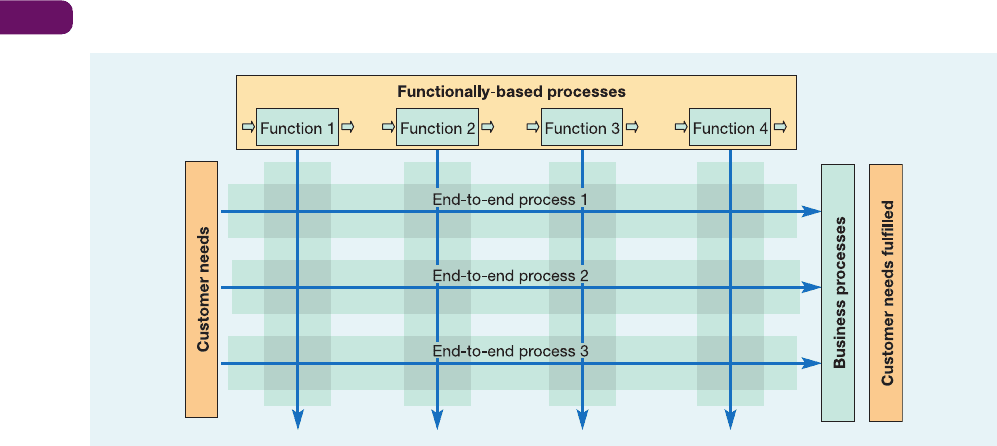
use quantitative methods (some of the TQM gurus promoted statistical process control for
example) although it has done a lot to emphasize the use of quantitative evidence. In fact,
much of the considerable training required by Six Sigma consultants is devoted to mastering
quantitative analytical techniques. However, the statistical methods used in improvement
activities do not always reflect conventional academic statistical knowledge as such. They
emphasize observational methods of collecting data and the use of experimentation to
examine hypotheses. Techniques include graphical methods, analysis of variance, and two-level
factorial experiment design. Underlying the use of these techniques is an emphasis on the
scientific method, responding only to hard evidence, and using statistical software to facilitate
analysis.
Customer-centricity
There is little point in improvement unless it meets the requirements of the customers.
However, in most improvement approaches, meeting the expectations of customers means
more than this. It involves the whole organization in understanding the central importance
of customers to its success and even to its survival. Customers are seen not as being external
to the organization but as the most important part of it. However, the idea of being customer-
centric does not mean that customers must be provided with everything that they want.
Although ‘What’s good for customers’ may frequently be the same as ‘What’s good for the
business’, it is not always. Operations managers are always having to strike a balance between
what customers would like and what the operation can afford (or wants) to do.
Systems and procedures
Improvement is not something that happens simply by getting everyone to ‘think improve-
ment’. Some type of system that supports the improvement effort may be needed. An
improvement system (sometimes called a ‘quality system’) is defined as:
‘the organizational structure, responsibilities, procedures, processes and resources for imple-
menting quality management’.
4
It should
‘define and cover all facets of an organization’s operation, from identifying and meeting the
needs and requirements of customers, design, planning, purchasing, manufacturing, packaging,
Part Four Improvement
546
Figure 18.4 BPR advocates reorganizing (re-engineering) micro-operations to reflect the natural customer-focused
business processes
M18_SLAC0460_06_SE_C18.QXD 10/20/09 15:22 Page 546

storage, delivery and service, together with all relevant activities carried out within these
functions. It deals with organization, responsibilities, procedures and processes. Put simply [it]
is good management practice.’
5
Reduce process variation
Processes change over time, as does their performance. Some aspect of process performance
(usually an important one) is measured periodically (either as a single measurement or as
a small sample of measurements). These are then plotted on a simple timescale. This has a
number of advantages. The first is to check that the performance of the process is, in itself,
acceptable (capable). They can also be used to check if process performance is changing over
time, and to check on the extent of the variation in process performance. In the supplement
to Chapter 17 we illustrated how random variation in the performance of any process could
obscure what was really happening within the process. So a potentially useful method of
identifying improvement opportunities is to try and identify the sources of random variation
in process performance. Statistical process control is one way of doing this.
Synchronized flow
This is another idea that we have seen before – in Chapter 15, as part of the lean philosophy.
Synchronized flow means that items in a process, operation or supply network flow smoothly
and with even velocity from start to finish. This is a function of how inventory accumulates
within the operation. Whether inventory is accumulated in order to smooth differences
between demand and supply, or as a contingency against unexpected delays, or simply to
batch for purposes of processing or movement, it all means that flow becomes asynchronous.
It waits as inventory rather than progressing smoothly on. Once this state of perfect syn-
chronization of flow has been achieved, it becomes easier to expose any irregularities of flow
which may be the symptoms of more deep-rooted underlying problems.
Emphasize education and training
Several improvement approaches stress the idea that structured training and organization
of improvement should be central to improvement. Not only should the techniques of
improvement be fully understood by everyone engaged in the improvement process, the
business and organizational context of improvement should also be understood. After all,
how can one improve without knowing what kind of improvement would best benefit the
organization and its customers? Furthermore, education and training have an important
part to play in motivating all staff towards seeing improvement as a worthwhile activity.
Some improvement approaches in particular place great emphasis on formal education. Six
Sigma for example (see later) and its proponents often mandate a minimum level of training
(measured in hours) that they deem necessary before improvement projects should be
undertaken.
Perfection is the goal
Almost all organization-wide improvement programmes will have some kind of goal or target
that the improvement effort should achieve. And while targets can be set in many different
ways, some improvement authorities hold that measuring process performance against some
kind of absolute target does most for encouraging improvement. By an ‘absolute target’ one
literally means the theoretical level of perfection, for example, zero errors, instant delivery,
delivery absolutely when promised, infinite flexibility, zero waste, etc. Of course, in reality
such perfection may never be achievable. That is not the point. What is important is that
current performance can be calibrated against this target of perfection in order to indicate
how much more improvement is possible. Improving (for example) delivery accuracy by
Chapter 18 Operations improvement
547
M18_SLAC0460_06_SE_C18.QXD 10/20/09 15:22 Page 547
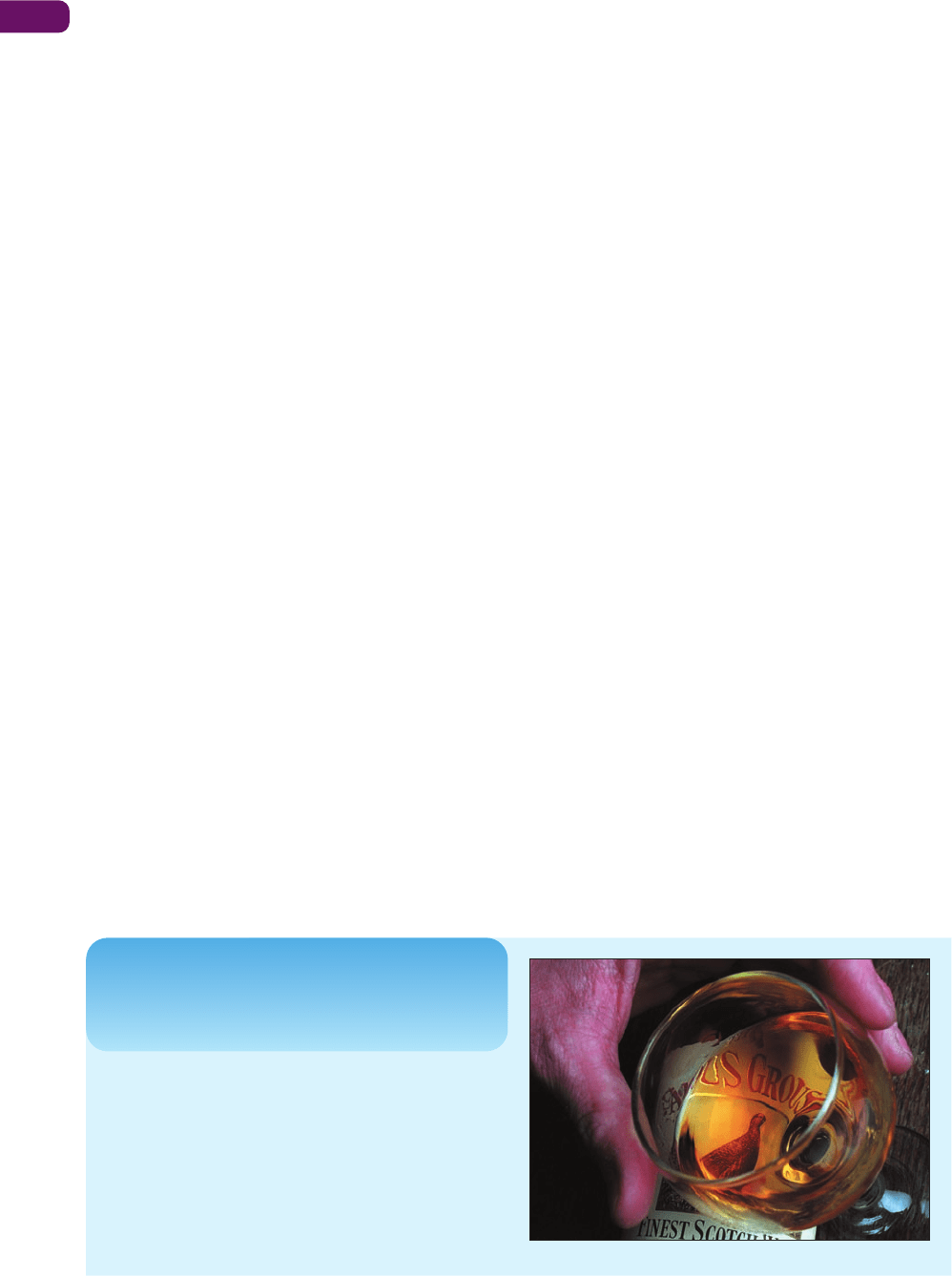
five per cent may seem good until it is realized that only an improvement of thirty per cent
would eliminate all late deliveries.
Waste identification
All improvement approaches aspire to eliminate waste. In fact, any improvement implies
that some waste has been eliminated, where waste is any activity that does not add value. But
the identification and elimination of waste is sometimes a central feature. For example, as we
discussed in Chapter 15, it is arguably the most significant part of the lean philosophy.
Include everybody
Harnessing the skills and enthusiasm of every person and all parts of the organization seems
an obvious principle of improvement. The phrase ‘quality at source’ is sometimes used, stress-
ing the impact that each individual has on improvement. The contribution of all individuals
in the organization may go beyond understanding their contribution to ‘not make mistakes’.
Individuals are expected to bring something positive to improving the way they perform
their jobs. The principles of ‘empowerment’ are frequently cited as supporting this aspect of
improvement. When Japanese improvement practices first began to migrate in the late 1970s,
this idea seemed even more radical. Yet now it is generally accepted that individual creativ-
ity and effort from all staff represents a valuable source of development. However, not all
improvement approaches have adopted this idea. Some authorities believe that a small
number of internal improvement consultants or specialists offer a better method of organiz-
ing improvement. However, these two ideas are not incompatible. Even with improvement
specialists used to lead improvement efforts, the staff who actually operate the process can
still be used as a valuable source of information and improvement ideas.
Develop internal customer–supplier relationships
One of the best ways to ensure that external customers are satisfied is to establish the idea
that every part of the organization contributes to external customer satisfaction by satisfying
its own internal customers. This idea was introduced in Chapter 17, as was the related con-
cept of service-level agreements (SLAs). It means stressing that each process in an operation
has a responsibility to manage these internal customer–supplier relationships. They do this
primarily by defining as clearly as possible what their own and their customers’ requirements
are. In effect this means defining what constitutes ‘error-free’ service – the quality, speed,
dependability and flexibility required by internal customers.
Part Four Improvement
548
The Erdington Group is a major private group in the
Scotch whisky industry with a number of specialist
operations covering every facet of Scotch whisky
distilling, blending and bottling. With a history that
goes back to the 1850s, the Group is owned by The
Robertson Trust, which gives more than £7m of dividend
income to charitable causes in Scotland each year, and
its employees, more than 90% of whom are shareholders.
Erdington’s brands are well known: The Famous Grouse,
Short case
Erdington embraces the spirit of
impr
ovement
6
Source: Rex Features
M18_SLAC0460_06_SE_C18.QXD 10/20/09 15:22 Page 548

Approaches to improvement
Many of the elements described above are present in one or more of the commonly used
approaches to improvement. Some of these approaches have already been described. For
example, both lean (Chapter 15) and TQM (Chapter 17) have been discussed in some detail.
In this section we will briefly re-examine TQM and lean, specifically from an improvement
perspective and also add two further approaches – business process re-engineering (BPR)
and Six Sigma.
Total quality management as an improvement approach
Total quality management was one of the earliest management ‘fashions’. Its peak of
popularity was in the late 1980s and early 1990s. As such it has suffered from something of
a backlash in recent years. Yet the general precepts and principles that constitute TQM are
still hugely influential. Few, if any, managers have not heard of TQM and its impact on
improvement. Indeed, TQM has come to be seen as an approach to the way operations and
processes should be managed and improved, generally. It is best thought of as a philosophy
of how to approach improvement. This philosophy, above everything, stresses the ‘total’ of
TQM. It is an approach that puts quality (and indeed improvement generally) at the heart
of everything that is done by an operation. As a reminder, this totality can be summarized
by the way TQM lays particular stress on the following elements (see Chapter 17):
● Meeting the needs and expectations of customers;
● Improvement covers all parts of the organization (and should be group-based);
● Improvement includes every person in the organization (and success is recognized);
● Including all costs of quality;
● Getting things ‘right first time’, i.e. designing-in quality rather than inspecting it in;
● Developing the systems and procedures which support improvement.
Even if TQM is not the label given to an improvement initiative, many of its elements
will almost certainly have become routine. The fundamentals of TQM have entered the
vernacular of operations improvement. Elements such as the internal customer concept,
the idea of internal and external failure-related costs, and many aspects of individual staff
empowerment, have all become widespread.
Chapter 18 Operations improvement
549
Cutty Sark, and a malt, The Macallan, which is matured
in selected ex-sherry oak casks. Another, Highland Park,
was recently named ‘best spirit in the world’ by The
Spirit Journal, USA. The Group’s Glasgow site has been
commended in a ‘Best Factory’ award scheme for its
use of improvement approaches in achieving excellence
in quality, productivity and flexibility. This is a real
achievement given the constraints of whisky production,
bottling and distribution. Some whisky can take 30 years
to mature and with malts, there is a limited number of
available ex-sherry casks. Production planning must
look forward to what may be needed in 10, 18 or even
30 years’ time, and having the right malts in stock is
crucial. After the whisky has been blended in vats, it is
decanted into casks again for the ‘marrying’ process.
The whisky stays in these casks for three months. After
this, it is ready for bottling. The main bottling line runs
at 600 bottles per minute, which is fast, so dealing with
problems in the plant is important. Production must be
efficient and reliable, with changeovers as fast as possible.
This is where the company’s improvement efforts
have paid dividends. It has used several improvement
approaches to help it maintain its operations
performance. ‘We did TQM, then CIP and six sigma
(there are 10 black belts on site and 30 green belts)
and now lean, which is an evolution for us’ explains
Stan Marshall, director of operational excellence. ‘Lean
has helped the line and has helped us’, says Roseann
McAlindon, a line operator on line 8, the lean pilot line,
who has worked in the site for 17 years. ‘On changeovers,
parts were reviewed for ease of fitment, made lighter and
easier to handle, and procedures written down.’
M18_SLAC0460_06_SE_C18.QXD 10/20/09 15:22 Page 549

Lean as an improvement approach
The idea of lean (also known as just-in-time, lean synchronization, continuous flow opera-
tions, and so on) spread beyond its Japanese roots and became fashionable in the West at
about the same time as TQM. And although its popularity has not declined to the same
extent as TQM’s, over 25 years of experience (at least in manufacturing), have diminished
the excitement once associated with the approach. But, unlike TQM, it was seen initially as
an approach to be used exclusively in manufacturing. Now, lean has become newly fashion-
able as an approach that can be applied in service operations. As a reminder (see Chapter 15)
the lean approach aims to meet demand instantaneously, with perfect quality and no waste.
Put another way, it means that the flow of products and services always delivers exactly what
customers want (perfect quality), in exact quantities (neither too much nor too little), exactly
when needed (not too early or too late), exactly where required (not to the wrong location),
and at the lowest possible cost. It results in items flowing rapidly and smoothly through
processes, operations and supply networks. The key elements of the lean when used as an
improvement approach are as follows.
● Customer-centricity
● Internal customer–supplier relationships
● Perfection is the goal
● Synchronized flow
● Reduce variation
● Include all people
● Waste elimination.
Some organizations, especially now that lean is being applied more widely in service
operations, view waste elimination as the most important of all the elements of the lean
approach. In fact, they sometimes see the lean approach as consisting almost exclusively
of waste elimination. What they fail to realize is that effective waste elimination is best
achieved through changes in behaviour. It is the behavioural change brought about through
synchronized flow and customer triggering that provides the window onto exposing and
eliminating waste.
It is easy to forget just how radical, and more importantly, counter-intuitive lean once
seemed. Although ideas of continuous improvement were starting to be accepted, the idea
that inventories were generally a bad thing, and that throughput time was more important
than capacity utilization seemed to border on the insane to the more traditionally minded.
So, as lean ideas have been gradually accepted, we have likewise come to be far more tolerant
of ideas that are radical and/or counter-intuitive. This is an important legacy because it
opened up the debate on operations practice and broadened the scope of what are regarded
as acceptable approaches. It is also worth remembering that when Taiichi Ohno wrote his
seminal book
7
on lean (after retiring from Toyota in 1978) he was able to portray Toyota’s
manufacturing plants as embodying a coherent production approach. However, this encour-
aged observers to focus in on the specific techniques of lean production and de-emphasized
the importance of 30 years of ‘trial and error’. Maybe the real achievement of Toyota was not
so much what they did but how long they stuck at it.
Business process re-engineering (BPR)
The idea of business process re-engineering originated in the early 1990s when Michael Hammer
proposed that rather than using technology to automate work, it would be better applied
to doing away with the need for the work in the first place (‘don’t automate, obliterate’).
In doing this he was warning against establishing non-value-added work within an informa-
tion technology system where it would be even more difficult to identify and eliminate. All
work, he said, should be examined for whether it adds value for the customer and if not pro-
cesses should be redesigned to eliminate it. In doing this BPR was echoing similar objectives
Part Four Improvement
550
M18_SLAC0460_06_SE_C18.QXD 10/20/09 15:22 Page 550

in both scientific management and more recently lean approaches. But BPR, unlike those two
earlier approaches, advocated radical changes rather than incremental changes to processes.
Shortly after Hammer’s article, other authors developed the ideas, again the majority of them
stressing the importance of a radical approach to elimination of non-value-added work.
This radicalism was summarized by Davenport who, when discussing the difference between
BPR and continuous improvement, held that ‘Today’s firms must seek not fractional, but
multiplicative levels of improvement – ten times rather than ten per cent’.
BPR has been defined
8
as
‘the fundamental rethinking and radical redesign of business processes to achieve dramatic
improvements in critical, contemporary measures of performance, such as cost, quality, service
and speed’.
But there is far more to it than that. In fact, BPR was a blend of a number of ideas which had
been current in operations management for some time. Lean concepts, process flow charting,
critical examination in method study, operations network management and customer-focused
operations all contribute to the BPR concept. It was the potential of information techno-
logies to enable the fundamental redesign of processes, however, which acted as the catalyst
in bringing these ideas together. It was the information technology that allowed radical pro-
cess redesign even if many of the methods used to achieve the redesign had been explored
before. For example, ‘Business Process Reengineering, although a close relative, seeks radical
rather than merely continuous improvement. It escalates the effort of . . . [lean]...and TQM to
make process orientation a strategic tool and a core competence of the organization. BPR con-
centrates on core business processes, and uses the specific techniques within the . . . [lean]...and
TQM tool boxes as enablers, while broadening the process vision.’
9
The main principles of BPR can be summarized in the following points.
● Rethink business processes in a cross-functional manner which organizes work around
the natural flow of information (or materials or customers).
● Strive for dramatic improvements in performance by radically rethinking and redesigning
the process.
● Have those who use the output from a process, perform the process. Check to see if all
internal customers can be their own supplier rather than depending on another function in
the business to supply them (which takes longer and separates out the stages in the process).
● Put decision points where the work is performed. Do not separate those who do the work
from those who control and manage the work.
Example
10
We can illustrate this idea of reorganizing (or re-engineering) around business processes
through the following simple example. Figure 18.5(a) shows the traditional organization of
a trading company which purchases consumer goods from several suppliers, stores them,
and sells them on to retail outlets. At the heart of the operation is the warehouse which
receives the goods, stores them, and packs and dispatches them when they are required
by customers. Orders for more stock are placed by Purchasing which also takes charge of
materials planning and stock control. Purchasing buys the goods based on a forecast which
is prepared by Marketing, which takes advice from the Sales department which is process-
ing customers’ orders. When a customer does place an order, it is the Sales department’s
job to instruct the warehouse to pack and dispatch the order and tell the Finance depart-
ment to invoice the customer for the goods. So, traditionally, five departments (each a
micro-operation) have between them organized the flow of materials and information within
the total operation. But at each interface between the departments there is the possibility
of errors and miscommunication arising. Furthermore, who is responsible for looking after the
customer’s needs? Currently, three separate departments all have dealings with the customer.
Similarly, who is responsible for liaising with suppliers? This time two departments have con-
tact with suppliers.
Chapter 18 Operations improvement
551
M18_SLAC0460_06_SE_C18.QXD 10/20/09 15:22 Page 551
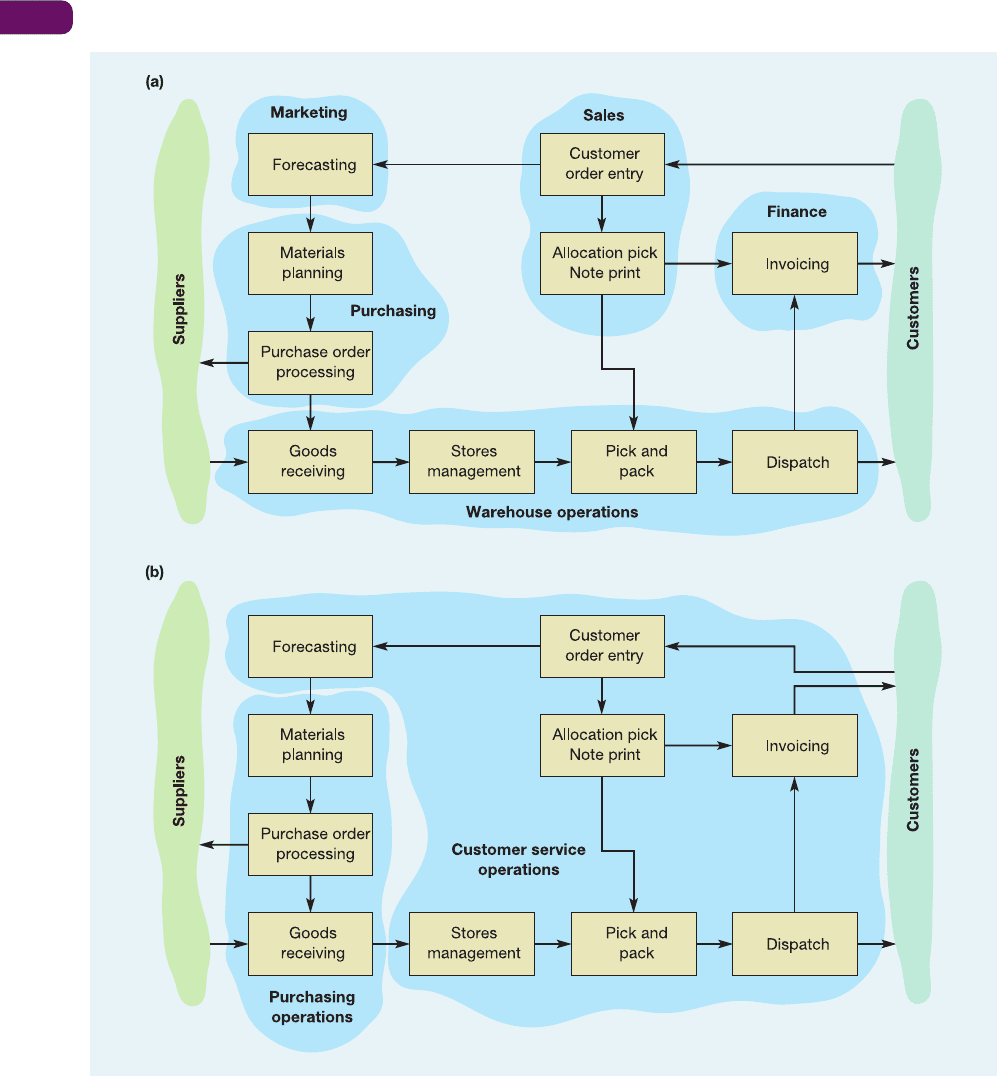
Eventually the company reorganized around two essential business processes. The first
process (called purchasing operations) dealt with everything concerning relationships with
suppliers. It was this process’s focused and unambiguous responsibility to develop good
working relationships with suppliers. The other business process (called customer service
operations) had total responsibility for satisfying customers’ needs. This included speaking
‘with one voice’ to the customer.
Part Four Improvement
552
Figure 18.5 (a) Before and (b) after re-engineering a consumer goods trading company
M18_SLAC0460_06_SE_C18.QXD 10/20/09 15:22 Page 552
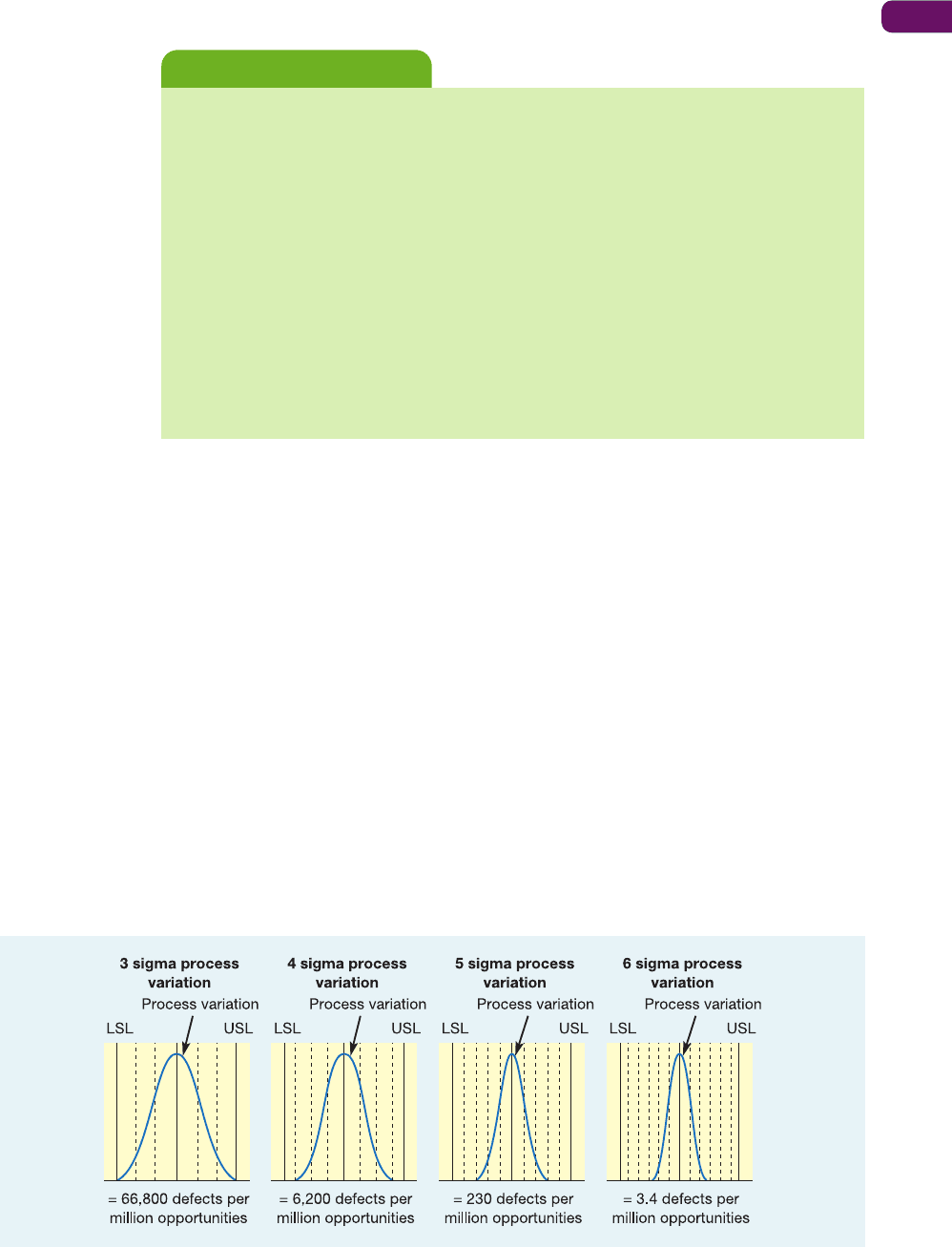
Figure 18.6 Process variation and its impact on process defects per million
Six Sigma
The Six Sigma approach was first popularized by Motorola, the electronics and communica-
tions systems company. When it set its quality objective as ‘total customer satisfaction’ in
the 1980s, it started to explore what the slogan would mean to its operations processes.
They decided that true customer satisfaction would only be achieved when its products
were delivered when promised, with no defects, with no early-life failures and when the
product did not fail excessively in service. To achieve this, Motorola initially focused on
removing manufacturing defects. However, it soon came to realize that many problems were
caused by latent defects, hidden within the design of its products. These may not show
initially but eventually could cause failure in the field. The only way to eliminate these defects
was to make sure that design specifications were tight (i.e. narrow tolerances) and its pro-
cesses very capable.
Motorola’s Six Sigma quality concept was so named because it required the natural
variation of processes (± 3 standard deviations) should be half their specification range.
In other words, the specification range of any part of a product or service should be ± 6 the
standard deviation of the process (see Chapter 17). The Greek letter sigma (σ) is often used
to indicate the standard deviation of a process, hence the Six Sigma label. Figure 18.6
illustrates the effect of progressively narrowing process variation on the number of defects
Chapter 18 Operations improvement
553
BPR has aroused considerable controversy, mainly because BPR sometimes looks only
at work activities rather than at the people who perform the work. Because of this, people
become ‘cogs in a machine’. Many of these critics equate BPR with the much earlier
principles of scientific management, pejoratively known as ‘Taylorism’. Generally these
critics mean that BPR is overly harsh in the way it views human resources. Certainly there
is evidence that BPR is often accompanied by a significant reduction in staff. Studies at
the time when BPR was at its peak often revealed that the majority of BPR projects could
reduce staff levels by over 20 per cent.
11
Often BPR was viewed as merely an excuse for
getting rid of staff. Companies that wished to ‘downsize’ were using BPR as the pretext,
putting the short-term interests of the shareholders of the company above either their
longer-term interests or the interests of the company’s employees. Moreover, a com-
bination of radical redesign together with downsizing could mean that the essential core
of experience was lost from the operation. This leaves it vulnerable to any marked turbu-
lence since it no longer possessed the knowledge and experience of how to cope with
unexpected changes.
Critical commentary
M18_SLAC0460_06_SE_C18.QXD 10/20/09 15:22 Page 553
